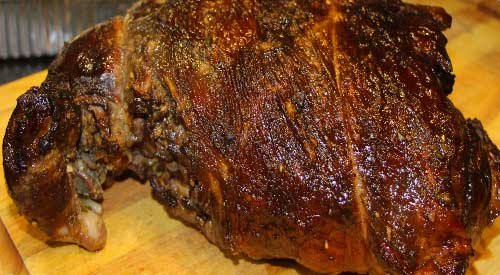
I’ve been pleasantly surprised at how lamb has slowly been gaining greater popularity in North America. Normally associated with Easter, I’ve had many followers indicate that they love to cook lamb in the summer on the grill as well as for holidays like Thanksgiving (yes, there are some that don’t do a turkey or add this protein to the dinner) and Christmas.
My intention today is to provide some guidance on the cuts of lamb, which work best for wood-fired cooking methods, and provide some flavor pairing suggestions to consider for your recipes. Know that my definition of lamb is a young sheep of fewer than 12 months of age.
Primal Cuts
There are eight basic cuts of lamb: neck, shoulder, breast, ribs, loin, leg, foreshank, and shank. Immediately, I want you to understand that there is much less meat harvested from a lamb than on some other common animals. The reason is that lamb tends to be quite fatty and the fat is not something consumable like the current rage with pork. Once a lamb is harvested, trimmed of its fat, had non-edible parts removed, there is about 40% of its weight remaining in viable meat. Thus, lamb can be very expensive.Let’s look at each of the cuts and provide some insight into the best methods of cooking each.
Neck: Then neck contains some of the most marbled meat of the lamb making it ideal for longer cooking methods. Because of the fattiness of the cut, it is best to marinate it for about 4 hours prior to cooking. This is a cut that is generally sliced, marinated, and then cooked casserole-style. This can be done on a grill set up with a two-zone cooking method to allow the wood to be added to the hot side of the grill which can infuse the contents of the casserole if left uncovered. This cut also works well when ground to produce lamb burgers and sausage.
Shoulder: This is by far one of the most flavorful cuts, is less expensive as it contains more connective tissue and bone producing a tougher cut and can be cooked a variety of ways. This section can produce bone-in and boneless roasts, shoulder chops, and stew meat. It is ideal for a slow and low method of cooking which includes traditional smoking. As such, preparations can include brining, dry and wet rub, and marinating.
Foreshank and Shank: As the name implies, the foreshank is attached to the front legs of the lamb while the shank is connected to the rear legs. These cuts are ideally braised and presented as individual servings. Again, these can be done like the neck cut in a casserole on the grill with wood for flavoring.
Rib: Containing what is called the rack and crown, this is the section of the lamb that would be the equivalent to prime rib roast of beef. It is the most expensive cut and is ideal on the grill. Always use a two-zone cooking set up to prevent overcooking of the outside. Chops can also be produced from this cut but note that they cook quickly. I prefer to still use a two-zone cooking setup so I can move the chops from direct heat to indirect as needed.
Loin: This muscle of the lamb is the most tender and resembles miniature versions of T-bone steak. It can also be cut into the tenderloin and top loin chops, which is the filet mignon of lamb. Don’t think you can roast that tenderloin, however, as the size is too small for this method but it works perfectly when grilled.
Leg: Unlike other animals, the leg of lamb is very tender and versatile, producing boneless roasts, sirloin steaks, and kabob meat. This cut can be butterflied if deboned and grilled or left whole for grilled lamb.
Breast: This tends to be a small cut that you can use bone-in or deboned. If bone-in, treat like a rack of ribs and plan to slow cook. The ideal is on the grill after marinating overnight. A temperature of 225°F is recommended and again, using a two-zone cooking method will keep this moist if you include a water pan. There are many recipes for stuffed lamb breast as well that a roasting method can be used. Certainly, grilling two-zone method will make these moist, tender and flavorful.
Flavor Pairings
One characteristic of lamb is its ability to stand up to other strong flavors whether in spice or herb form. Here are the top flavor pairings for lamb:Almond: incorporate into a stuffing with rice
Anchovy: cuts slits into a leg or shoulder and insert drained anchovy into each cavity
Anise: a perfect addition to a casserole for infusion to the meat
Apricot: preferably used dry this is perfect with cinnamon, cumin, coriander
Cabbage: add potatoes and let it simmer with the meat
Cherry: adding onions, saffron, almonds, pomegranate, feta, mint, parsley, pistachio
Cumin: add chili and put on the grill
Eggplant: perfect if done kabob style over the hot coals
Goat Cheese: add spinach or kale and this is the perfect pairing for lamb burgers
Mint: likely the most well-known pairing which reduces the funkier undertones of the meat
Peas: add butter, onion, and tomato
Saffron: use this spice in rice to accompany the meat
With all these great flavor pairings, lamb should continue to grow in popularity and maybe will surpass one of our more common animal protein choices.
Do you have a favorite cut and preparation of grilled lamb? Share your thoughts and photos.
Bringing innovation to wood-fired cooking with recipes, techniques and the science behind the fire, smoke, and flavor. That’s SmokinLicious®.
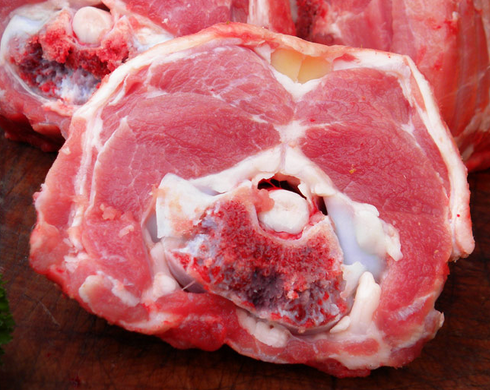


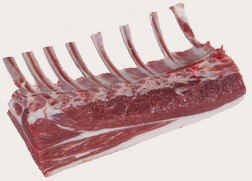
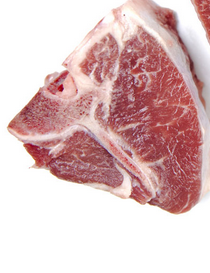
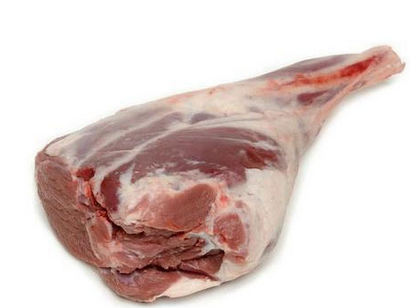
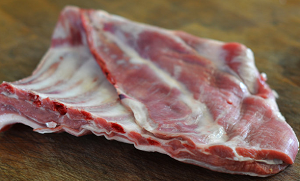
No comments:
Post a Comment